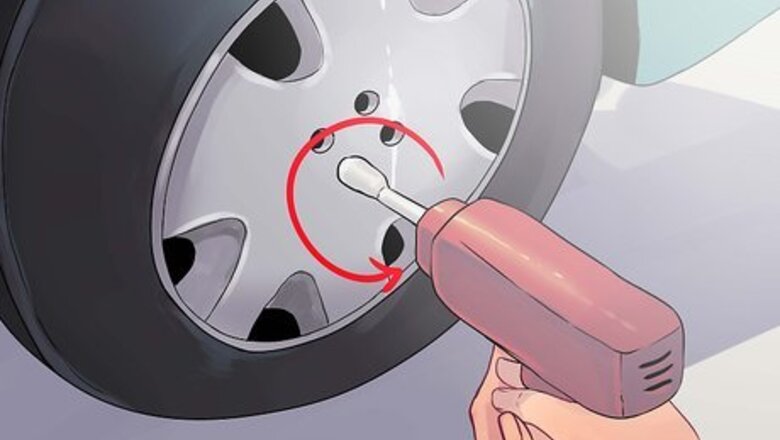
views
Removing the Vehicle’s Axle Nut
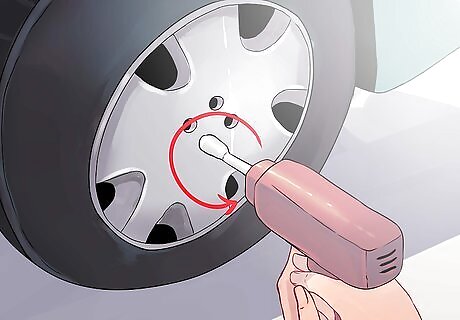
Remove the vehicle’s hubcap. Before so much as jacking up the vehicle, you need to remove the axle nut. Start by removing the hubcap for the respective wheel of the CV axle to be replaced. For vehicles with rims, you may simply have a cap at the center of the wheel rather than a hubcap.
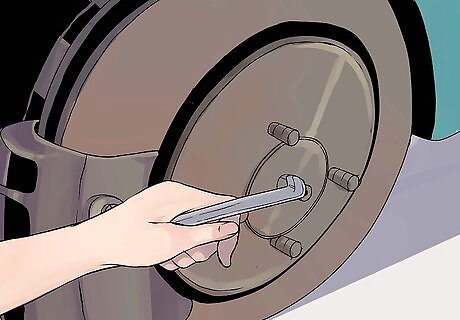
Remove the cotter pin from the axle nut. If your vehicle has a cotter pin securing the axle nut, you will need to remove it. The pin will resemble a bobby pin with the ends folded back to hold it in place. You will need to use pliers to straighten the two bent ends of the cotter pin before you can remove it. If the pin is stuck, try spraying it the a penetrating lubricant from a hardware or automotive store. The lubricant should actually help with the axle nut as well.

Remove the axle nut. Once the cotter pin is out, you can remove the axle nut. The nut will take significant torque to remove, which is why it is much safer to remove the nut before jacking up the vehicle. Unfortunately, axle nuts do not have a standard size, and the socket size required will be different for different vehicles. The parts department at a certified dealership for your vehicle make should be able to tell you the exact size if you want to check before starting the project.
Removing the Wheel and Brake Assembly
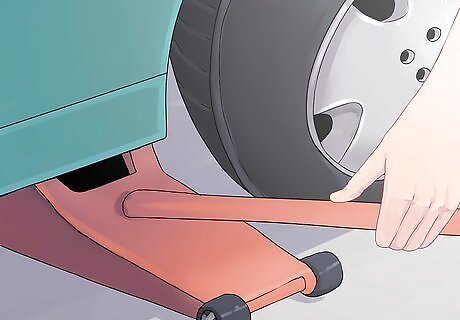
Jack up the appropriate side of the car. Next, you will need to remove the wheel, which requires lifting the vehicle. Consult your vehicle’s owner’s manual for the correct spot to jack up your car, and ensure that you pick a spot on the frame and not the much more fragile body. Double-check that the vehicle is in park and that the parking brake is engaged before jacking up the vehicle.
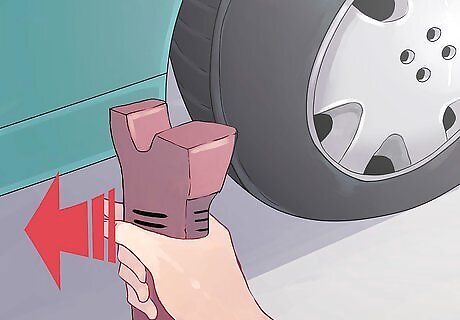
Place the vehicle on jack stands. Once you have the vehicle lifted enough to place your jack stand, ease it back down onto the stand, which is more stable than the jack alone. If you have concerns about using jack stands, consult Use Jack Stands for more information.
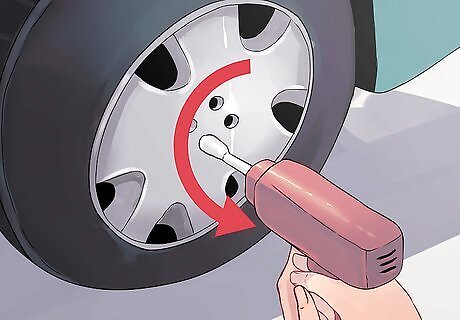
Remove the wheel. The lug nuts securing the wheel will already be exposed from when you removed the hubcap. Remove the lug nuts and the wheel the same way you would if you were changing a tire. If you need guidance for this step, you can consult Change a Tire for assistance.
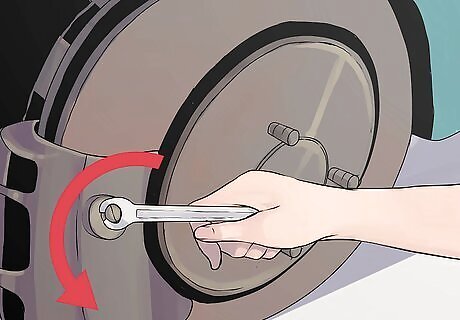
Remove the brake caliper. Once the wheel is off, the brake caliper and brake rotor will be clearly visible. The caliper housing is the larger piece attached to the outside of the rotor. The caliper will be held in place on the rear side of the rotor by bolts in a mounting bracket. The specific configuration will depend on your make and model year vehicle. The mounting bracket most commonly uses 17mm bolts. Since the caliper is connected to your vehicle’s brake line, you want to keep slack in the brake line instead of letting it hang. You can easily suspend the caliper from a short bungee cord to keep it out of your way without putting too much stress on the brake line.
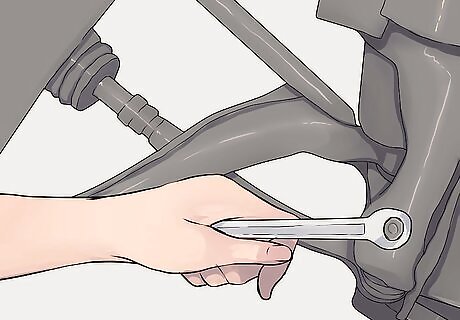
Unbolt the outer tie rod from the steering knuckle. The outer tie rod is literally a rod bolted to the steering knuckle, which is just behind the rotor. This piece will likely be bolted with another 17mm bolt. Like the axle nut, this bolt may be held in place with a cotter pin. Penetrating lubricant may help you more easily remove the pin and bolt. The tie rod may still be pretty snug in the steering knuckle even after removing the bolt. Tape the steering knuckle joint with a hammer (hitting the knuckle where the rod goes through and not the threaded portion of the tie rod) to help remove it. You might need to separate the ball joint to get the lower control on the steering knuckle out of the way.
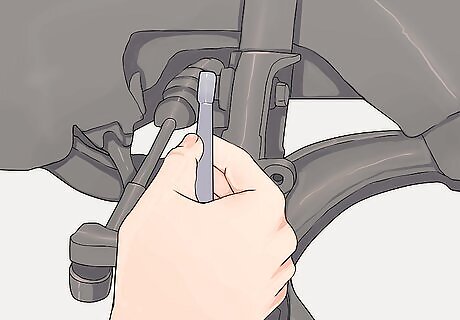
Unbolt the hub from the strut tower. Two more 17mm bolts will connect the wheel hub to the strut tower. Once you remove these bolts, the hub should only be connected by the axle through the center hole, and you should easily be able to remove it. Since these are actual bolts, you will need to secure the head of the bolt while loosening the nut, or it will just turn.
Removing and Replacing the CV Axle

Pry the CV joint. Follow the axle back, and you will see the actual joint where it slides into the transmission. You can use a small pry bar or sturdy flathead screwdriver to pry the axle from the joint. If the axle doesn’t immediately come loose, try twisting it back and force to break the seal. It’s normal for some transmission fluid to leak out as you remove the axle from the cv joint. You should put down a catch pan. On your vehicle, the axle may have to pass through an enclosed piece called a wishbone before it’s completely free. You can remove the band from the inner boot to help the old axle pass through.
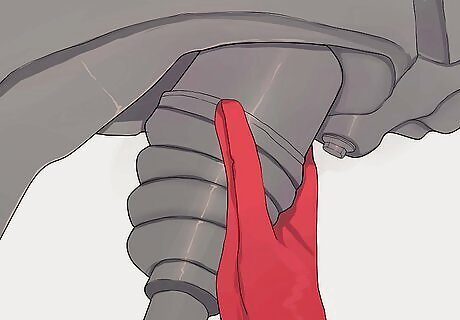
Insert the new CV axle into the transmission housing. Just as you removed the old CV axle, insert the new one into the same spot in the transmission housing. The peg will slide all the way in until the axle is flush against the housing. There is a small C-clip on the axle that you will feel snap into place. If the axle isn’t quite flush, you can use a rubber mallet to gently tap it into place.
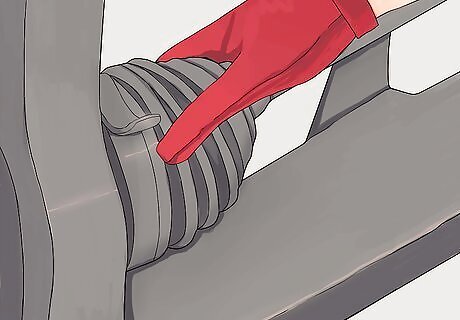
Reinsert the axle through the hub assembly. The new axle will have to be reinserted into the center of the hub assembly at the same spot where you removed the old axle.
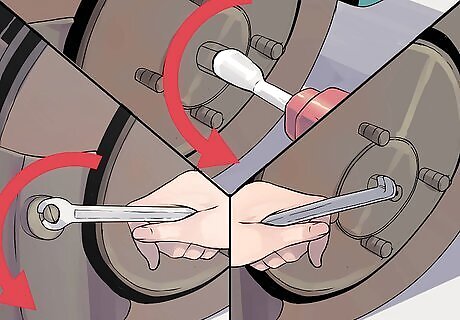
Refasten the assemblies in the order you removed them. Starting with the hub assembly to the strut tower, refasten all of the bolts you removed. Reconnect the outer tie rod to the steering knuckle next, and then reattach the caliper. Any old cotter pins may be brittle, so you should replace them with new ones rather than reusing the old pins.
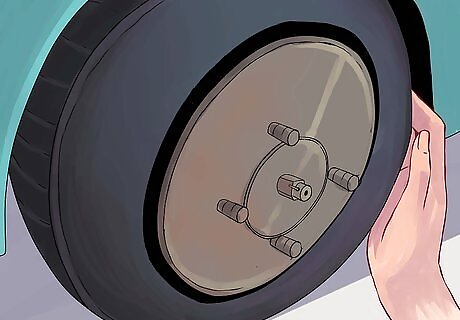
Reattach the wheel. By this time, you can put the wheel back on the vehicle (again, the same as you would when changing a tire). After the wheel is on, you can lower the car off the jack and jack stands.
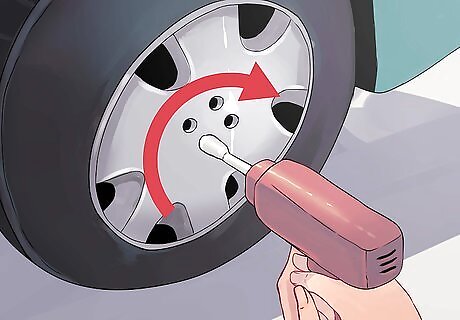
Tighten the axle nut. Finally, you can retighten the axle nut once the vehicle is back on the ground. Make sure that you still have the parking brake engaged while tightening. It’s not a bad idea to clean the threaded part of the axle with a brake cleaner in case any grease has gotten on it while feeding it through the hub.




















Comments
0 comment